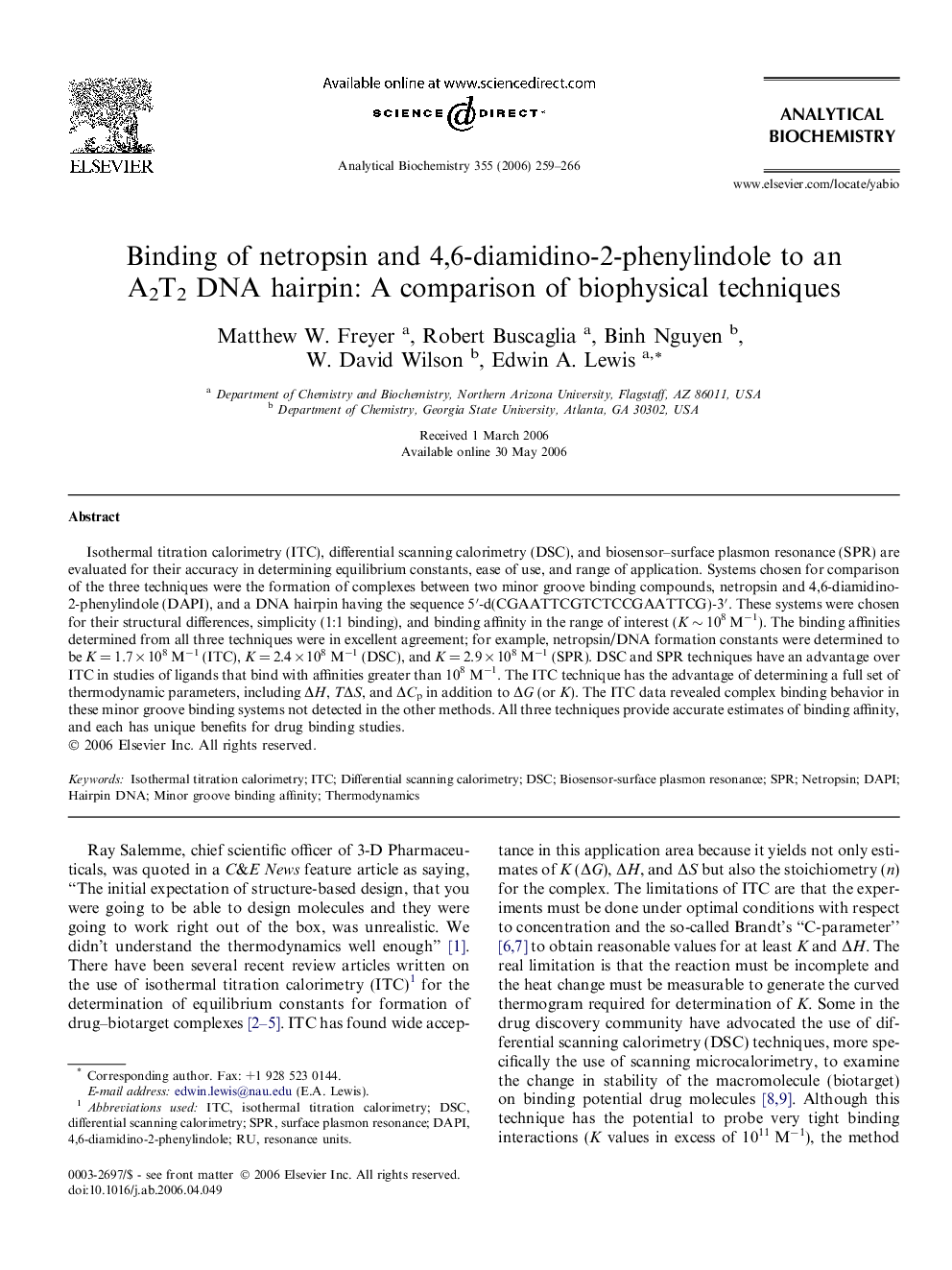| Article ID | Journal | Published Year | Pages | File Type |
|---|---|---|---|---|
| 1176534 | Analytical Biochemistry | 2006 | 8 Pages |
Isothermal titration calorimetry (ITC), differential scanning calorimetry (DSC), and biosensor–surface plasmon resonance (SPR) are evaluated for their accuracy in determining equilibrium constants, ease of use, and range of application. Systems chosen for comparison of the three techniques were the formation of complexes between two minor groove binding compounds, netropsin and 4,6-diamidino-2-phenylindole (DAPI), and a DNA hairpin having the sequence 5′-d(CGAATTCGTCTCCGAATTCG)-3′. These systems were chosen for their structural differences, simplicity (1:1 binding), and binding affinity in the range of interest (K ∼ 108 M−1). The binding affinities determined from all three techniques were in excellent agreement; for example, netropsin/DNA formation constants were determined to be K = 1.7 × 108 M−1 (ITC), K = 2.4 × 108 M−1 (DSC), and K = 2.9 × 108 M−1 (SPR). DSC and SPR techniques have an advantage over ITC in studies of ligands that bind with affinities greater than 108 M−1. The ITC technique has the advantage of determining a full set of thermodynamic parameters, including ΔH, TΔS, and ΔCp in addition to ΔG (or K). The ITC data revealed complex binding behavior in these minor groove binding systems not detected in the other methods. All three techniques provide accurate estimates of binding affinity, and each has unique benefits for drug binding studies.
